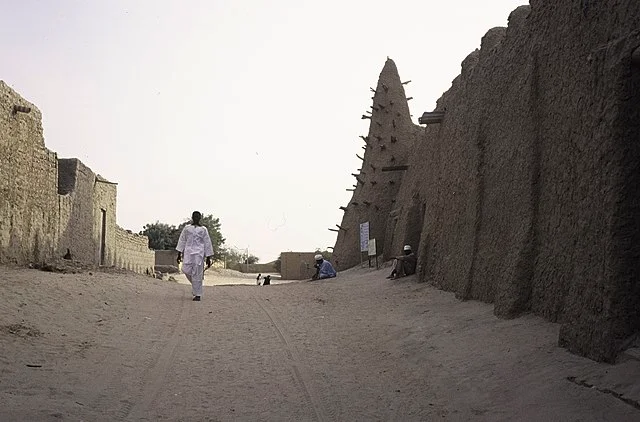The Sidi Yahya Mosque is a significant historical and religious site located in Timbuktu, Mali. It forms part of the renowned Djinguereber Mosque complex and is one of three prominent mosques in Timbuktu alongside Djinguereber and Sankore. Built in 1441 AD, the mosque is named after Sidi Yahya, a respected scholar and spiritual leader in the region. This mosque represents Mali’s rich Islamic heritage and Timbuktu’s position as a center of learning and trade during the 15th and 16th centuries AD.
Get your dose of History via Email
Historical Background
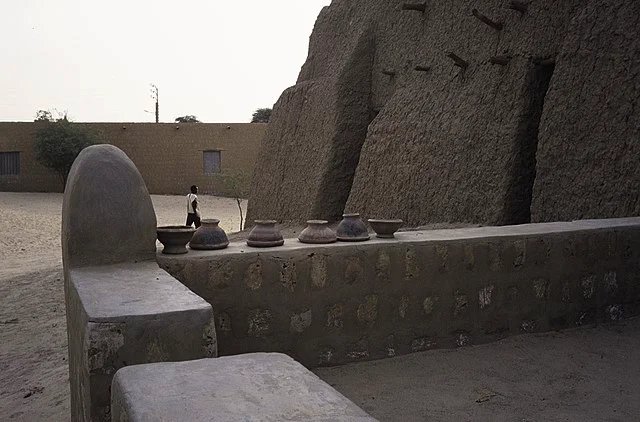
The mosque’s construction began under the guidance of Sheikh El-Mokhtar Hamalla, but it was completed during the leadership of the scholar and imam Sidi Yahya, whom it was later named after. Sidi Yahya, born in the late 14th century AD, was highly regarded in Timbuktu for his knowledge and piety. He became a prominent leader in the community, teaching at the mosque’s madrasa and attracting students and scholars from across West Africa.
The Sidi Yahya Mosque not only served as a place of worship but also played a crucial role as a center of learning, adding to Timbuktu’s growing reputation as the “City of 333 Saints.” During the golden age of the Mali Empire, the mosque’s madrasa housed one of the largest collections of manuscripts in Africa, covering diverse fields such as theology, law, mathematics, and medicine.
Architectural Features
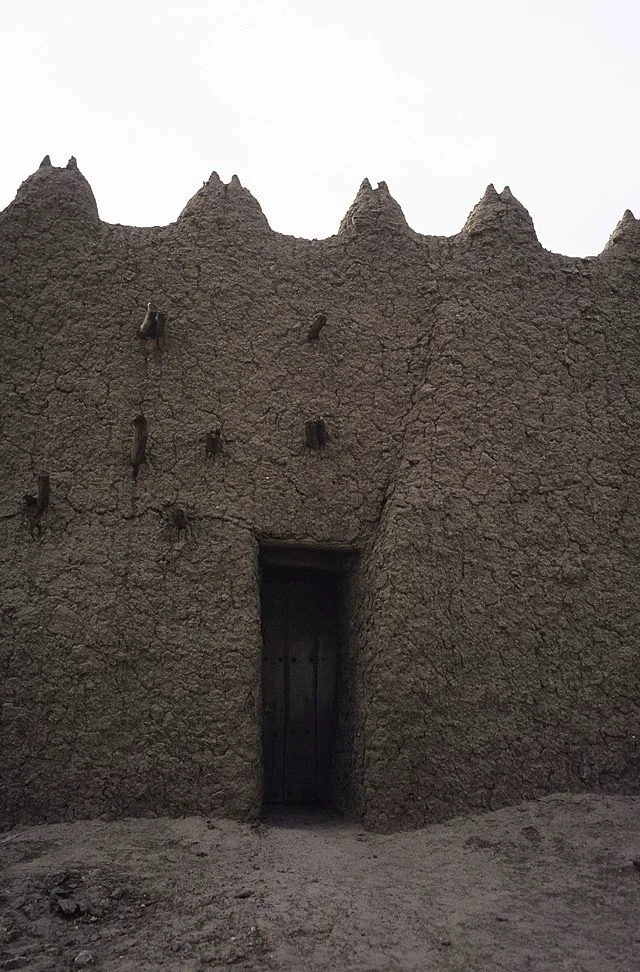
The Sidi Yahya Mosque reflects the traditional Sudanese-Sahelian style, characterized by mudbrick construction and wooden support beams, also called “torons.” These beams provide structural stability and allow for easy repairs. The mosque’s walls are thick and durable, with natural clay plaster protecting the structure from extreme desert temperatures.
The wooden doors at Sidi Yahya hold special cultural and spiritual significance. According to legend, the doors were prophesied to remain closed until the end of the world. In 1939, however, they were ceremonially opened, marking an essential event in local history. This act symbolized new beginnings for Timbuktu, though it sparked debates regarding its potential impact on the city’s spiritual legacy.
Cultural and Religious Significance
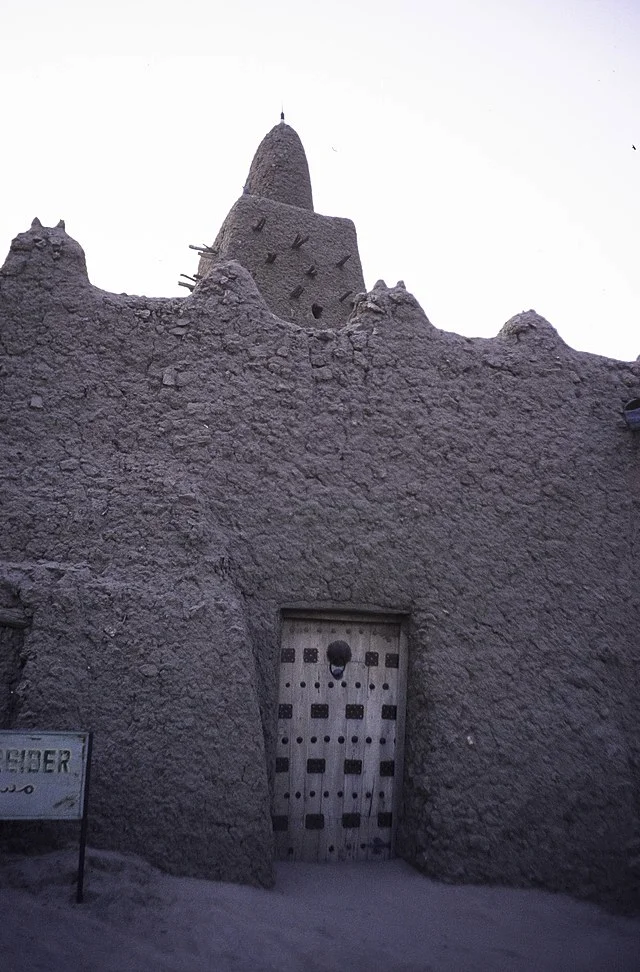
The mosque’s establishment reinforced Timbuktu’s importance as a spiritual and academic center in West Africa. During its height, scholars and students flocked to the mosque from various regions, making it a hub for Islamic education and scholarly exchange. The presence of figures like Sidi Yahya strengthened the city’s reputation as a peaceful and respected center for Islamic teachings.
Today, the Sidi Yahya Mosque remains a site of reverence for locals and visitors. It embodies Mali’s rich Islamic history and the broader heritage of West African Islam. It also highlights Timbuktu’s historic role in bridging cultural and intellectual exchange between North and Sub-Saharan Africa.
Preservation and Challenges
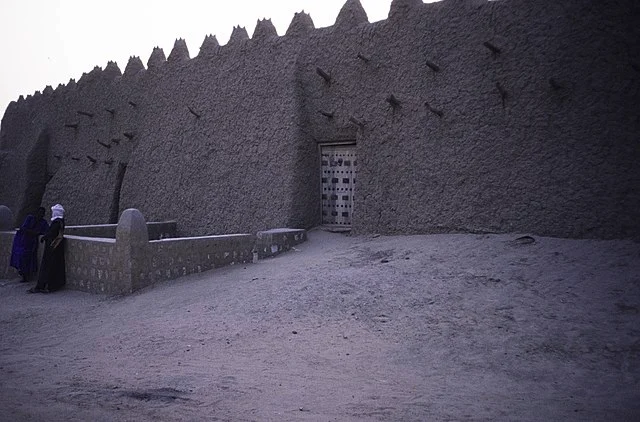
Over the centuries, Sidi Yahya Mosque has faced environmental and political challenges. The structure requires constant maintenance due to the fragile nature of mudbrick architecture. Local masons, known as “barakas,” have been responsible for ongoing restorations, preserving the traditional construction techniques passed down through generations.
In 2012, Timbuktu faced attacks from extremist groups that led to significant damage to historical monuments, including Sidi Yahya Mosque. Though the mosque itself was not destroyed, these events emphasized the urgent need to protect Timbuktu’s architectural heritage. With support from UNESCO and international organizations, restoration efforts have continued, highlighting the resilience of Mali’s cultural and spiritual identity.
Conclusion
The Sidi Yahya Mosque stands as a lasting testament to Timbuktu’s historic role as a center of Islamic scholarship, spirituality, and culture. Its architectural design, historical significance, and cultural impact illustrate the richness of West African heritage. As preservation efforts continue, Sidi Yahya remains a symbol of resilience and a valuable reminder of Timbuktu’s contributions to African and Islamic history. The mosque not only serves as a place of worship but also embodies the enduring legacy of a vibrant intellectual tradition in Mali.
Source:

